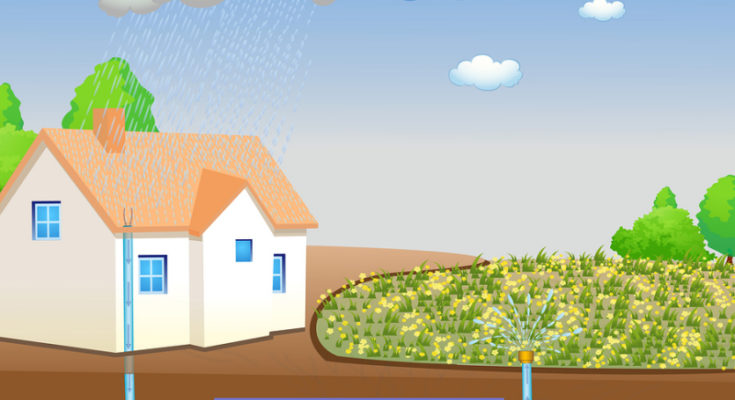Even though water is colorless and odorless, it is one of the most prevalent elements to sustain life on Earth. The Earth’s surface is 71 percent water of which 96.5 is salt water in the seas and oceans leaving only 3.5 percent freshwater. Out of the mere 3.5 percent of freshwater, a tiny fraction (0.003 percent) is safe for humans to consume or potable.
Uncontaminated water is sparse in many areas of the world, although it is a necessity to everyday life. People need fresh water for consumption and for preparing food, washing dishes, maintaining oral and personal hygiene.
The United States is not exempt from dry periods of below adequate rainfall. Since clean, fresh drinking water is necessary to all living creatures, it is more important than ever to conserve our valuable drinking water. One way is to harvest the free water that falls from the sky – rainwater.
People have harvested rainwater for thousands of years. Although the exact origins are unknown, discovered evidence dates this practice back to Ancient China.
The best thing about harvesting non-potable (not for human consumption) rainwater is that it so simple to get started with minimal upfront cost. Basically, one or two 30-gallon barrels and a downspout to guide the water to the barrel is all you need to harvest the free water that falls from the sky.
Start small, then when you want to invest in a more elaborate set up an expert or engineer can help you design a system for your needs.
WAYS TO USE NON POTABLE RAINWATER
- Laundry – A typical family of four household will generate over 300 loads of laundry per year that will consume 12,000 gallons of water – estimated 22 percent of the family’s total water usage.
- Flushing Toilets – Even though every toilet manufactured in the US since 1994 uses 1.28 or less gallons of water to flush, a family of four still flushes 9,000 gallons of clean drinking water every year. To use rainwater to flush the toilet, simply keep a bucket full of harvested rainwater close to your toilet or have a pipe plumbed from the rainwater cistern to your toilet tank.
- Irrigation of lawns and gardens – Keeping a plush green lawn during a hot, dry summer can be difficult and costly. Just to run a typical sprinkler attached to a ⅝” standard garden hose, one hour per day, three days a week will use approximately 1,020 gallons of water a week or 12,240 extra per month to pay on the utility bill. It is relatively easy to attach any rainwater storage barrels to an automatic sprinkler system.
- Outdoor Ponds and Water Fountains – If filtered to prevent clogging, harvested rainwater can be used in outdoor ponds and water fountains that have a pump.
- Washing Vehicles and Equipment – Rainwater is an excellent source for washing vehicles and other equipment. Untreated rainwater is perfect for washing cars, lawnmowers, tractors, four-wheelers or even the side of your house and driveway.
- Fire Protection – If you live in a wildfire prone area, you can keep large storage tanks of water with a good pump installed for added protection.
CONCLUSION
Before beginning your rainwater harvesting adventure, check with all local and state municipalities for the regulations that govern harvesting rainwater. Every area is different. Some cities and states encourage it, while others heavily regulate it.
AUTHOR’S BIO
Michael Tobias is the founder and principal of Chicago Engineers. He is a graduate of Georgia Tech class of 2004, with a Bachelor of Mechanical Engineering with honors. His innovative approach to MEP engineering comes from graduating GE’s Engineering Leadership Program, where he designed wind turbines and biofuel power plant engines. Michael’s passion within design is energy efficiency and green technology.



